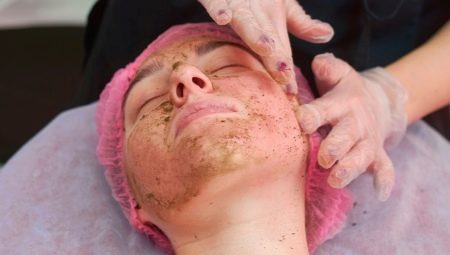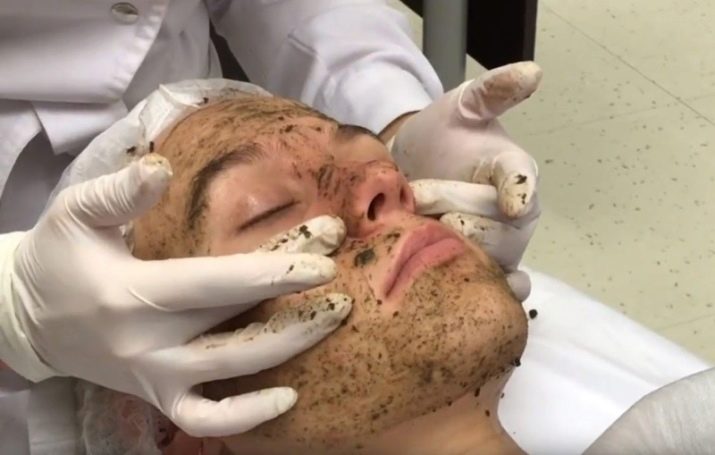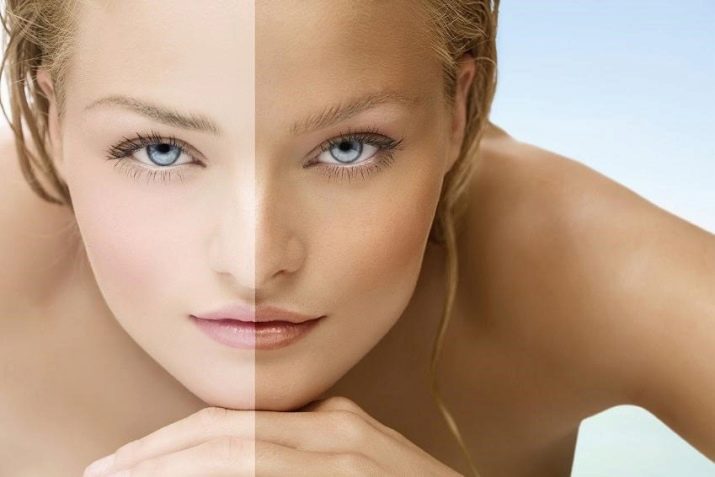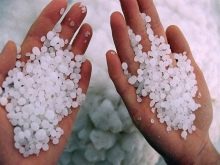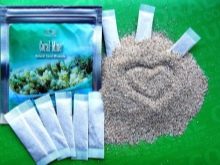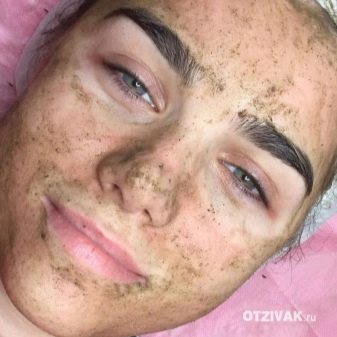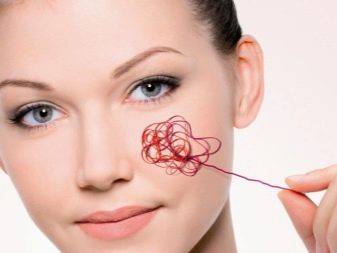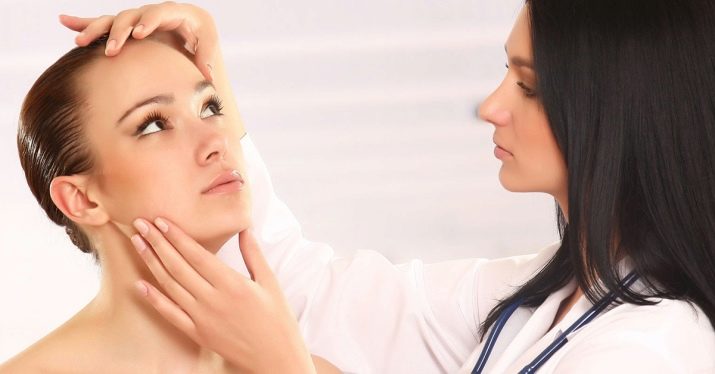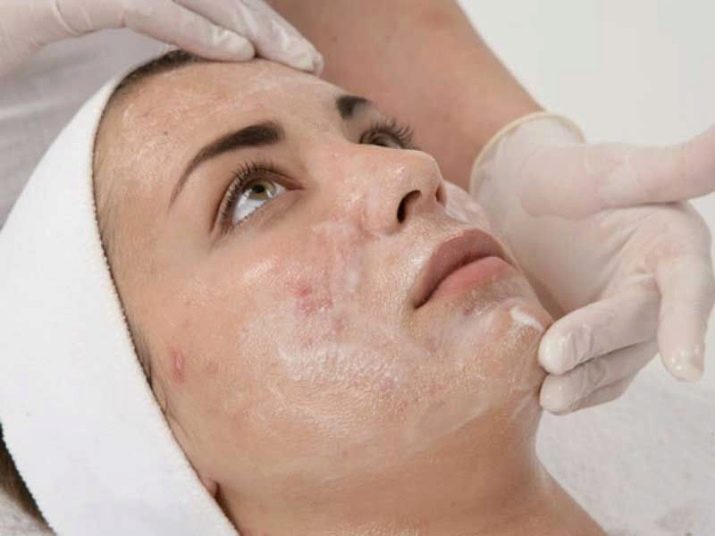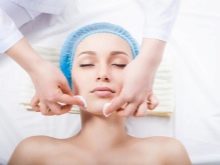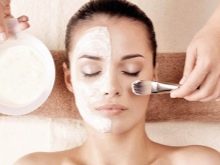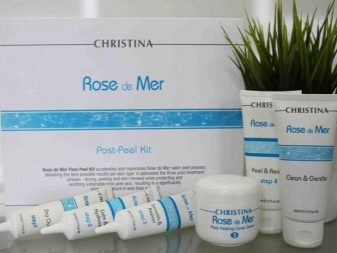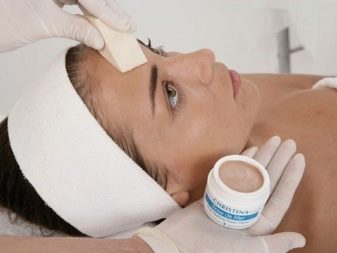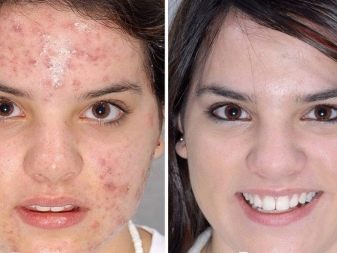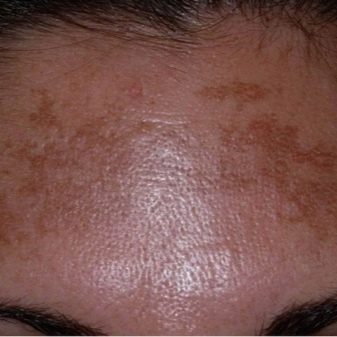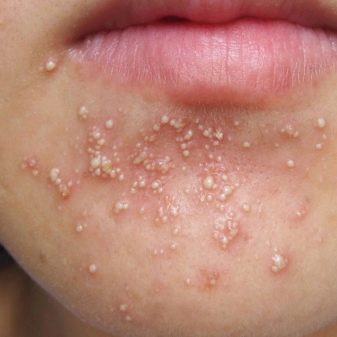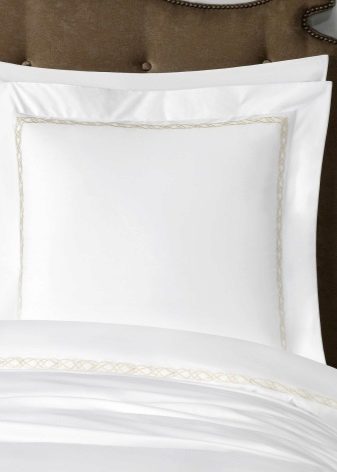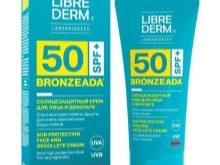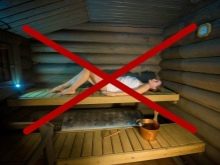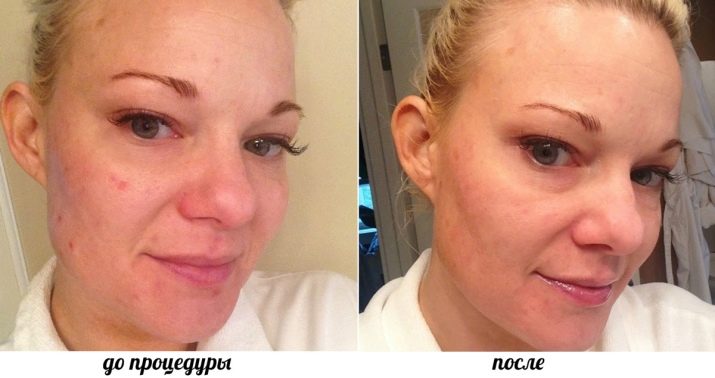Skin peeling is an obligatory cosmetic procedure for a modern woman. One of its most popular species is coral, which has an unusual composition and long lasting effect.
Features
Peeling is the most popular and fast-acting procedure for removing dead skin cells. On average, the renewal of skin cells takes up to 30 days, but due to a multitude of negative factors, this process can take a long time. Coral peeling can not only remove dead cells and make wrinkles less noticeable, but also trigger the production of collagen. So the body reacts to skin microtraumas that occur during this procedure.
In addition to cleansing, the skin receives and nutrients, as the composition includes only natural ingredients. At the same time, beneficial trace elements and vitamins fall directly into the cells, rather than linger on the surface.
Technology
The technology of coral peeling is the mechanical cleansing of the skin with natural ingredients, where the main component are the particles of coral. In terms of its effectiveness, it is also compared with diamond peeling. Only peeling with corals can be adjusted, since the depth of penetration of particles and skin cleansing depend on their number and time of procedure. Therefore, this type refers to superficial or median peeling, where the degree of influence is chosen by the client.
Composition
The procedure for cleaning the face with coral particles is absolutely safe, because The main components of this drug are the following substances.
- Coral particles, ground to powder. The corals of the Red Sea are popular for their healing and purifying properties. Coral microparticles remove the surface layer of dead cells and penetrate into the deeper layers of the skin, thereby cleansing the pores.
- Dead Sea salts act as not only abrasive particles, but also carriers of micronutrients for the skin. Thanks to the salts, the blood flow improves, the blood vessels are strengthened and the cells are renewed faster.
- Essential oils, including shea butter, which is known for its nutritional properties. This component allows you to saturate the skin cells with useful elements and vitamins. Thanks to oils, blood circulation is accelerated, metabolism is regulated.
- Herbal ingredients, which include algae extract. The main role of this extract is skin rejuvenation, as it includes antioxidants. In general, herbal ingredients are involved in the restoration of the skin, help to strengthen the cells of the cover and prevent inflammatory processes.
Benefit
Natural composition allows you to use the procedure for women of any age and with any type of skin. Peeling is useful for flabby skin, "stale" complexion and enlarged pores. He also helps to cope with mimic shallow wrinkles, with scars and age spots.
This procedure allows you to normalize the sebaceous glands, thereby reducing the appearance of acne and blackheads.
In case of exacerbation of this disease, it is necessary to refuse to carry out this procedure, since the mechanical action of the scrub can provoke inflammatory processes.
Season for
It is necessary to abandon the procedure in the season of the most active sun (spring and summer). The skin has a protective mechanism against aging, but this requires a thickened upper layer of the skin. During peeling it is removed, and the skin becomes most vulnerable to ultraviolet light.
To minimize the vulnerability and photoaging process, this procedure should be carried out in the winter season. The sun is not so active, which means that the risk of complications is minimal. That is why competent beauticians do not recommend carrying out the procedure in the summer, despite the use of UV protective creams.
Prohibition of use
As with any procedure, coral peeling has a number of limitations.
You should not carry out this procedure with the following problems.
- There is couperosis, that is, the presence of so-called spider veins. If you carry out the coral procedure in the process of exacerbation of the disease, then you can make the vessels even more susceptible to adverse environmental factors. Therefore, such a procedure is recommended to do only in the remission stage and after a thorough examination of the doctor.
- Demodecosis or a disease associated with the presence of a subcutaneous tick. As a rule, these parasites live in the mouth of the sebaceous glands, and after peeling, their mass reproduction and distribution occurs in all parts of the face.
This is due to the fact that the skin are getting, although minor, but injuries. This reduces the protective properties of the skin. Often this disease is confused with acne and improper treatment. Therefore, before the procedure should contact your dermatologist for an accurate diagnosis.
- Herpes. Regardless of the place of manifestation: on the mucous membrane or on the skin, the procedure should be carried out no earlier than six months after the exacerbation. With the urgent need for peeling, if after a treatment of herpes a short time has passed, it is necessary to take antiviral drugs. Experts recommend starting to take them 1-1.5 weeks before the expected date of the procedure.
- Pregnancy, feeling sick. The process of cleansing the skin with corals is painful. Therefore, it is not known how the body will react to pain. Even after the procedure will have to endure discomfort for several days.
- The presence of wounds on the skin or a weak pain threshold of the skin.
- Individual intolerance to the components of the drug.
Regardless of contraindications, such peeling is very popular including due to the quick execution of the procedure.
Performing the procedure
Coral peeling is less traumatic for the skin than similar procedures, but experts do not recommend it at home. Such a procedure has nuances on which the quality of the result depends. The first step is to consult a competent doctor who will examine the skin, if necessary, conduct the necessary tests and tell about the future result.
Only after this should be recorded on the procedure. The choice of a beauty salon should also be considered more carefully, since not only the appearance but also the health of the body as a whole depends on the quality of the procedure performed.
Stages
In general, salon peeling consists of three main stages.
Preparatory
About a month before the procedure, a specialist of the salon performs a soap peeling. This allows you to improve blood circulation, stimulate the process of cell renewal and, of course, remove the surface layer of “dead” cells. This stage can significantly reduce the risk of further complications. In some salons, this process is carried out immediately before the procedure itself.
Main
At this stage, a specialist examines the skin and selects the necessary means to remove makeup, sebum, dust and dirt. After this, steam skin treatment is carried out. This is done to open the pores and soften the skin.
Only after that the doctor applies the peeling agent on the face with the help of a special apparatus or hands. At the same time, the patient chooses the time and intensity of rubbing the composition himself. On average, the main stage lasts 4-10 minutes. At this time, coral particles and salt remove the dead cell layer, and the plant extracts and oils that make up the peeling feed and saturate the cells with vitamins. Then the scrub is removed, and a napkin moistened in cold water is applied to the skin, as cold allows to relieve irritation and pain.
After cooling masks are applied. The first mask is applied for 10-15 minutes for a better retention of coral particles in the skin, and, consequently, a more effective effect. The following mask is applied with lightly patting movements until completely absorbed. The main goal of this process is to protect the skin from negative environmental factors, including ultraviolet rays. In addition to protection, the components of the gel mask have a lifting, nourishing and moisturizing effect.
The final
The final stage involves applying a special cream that stays overnight. Its components help soothe irritated skin and reduce pain from the procedure.
If the procedure was used Israeli cosmetics Christina, then often for the final stage, experts use the cream of this line Ros de Mer. It gives the skin a pleasant beige tint, as part of the clay. It also helps prevent complications and protect the skin from harmful factors.
Frequency
Since such peeling can not be attributed to a benign mind, it is not recommended to carry it out often. Perform follow-up procedures only a month after the first peeling. At the end of the coral procedure, the skin is restored to two weeks, and in some cases this time increases to three weeks.
As a rule, to improve the skin and get rid of acne, one course of this procedure is needed, which consists of 2-3 peels. The quantity is absolutely individual, since it depends largely on the characteristics of the skin and its reaction to the procedure.
Complications
Peeling with coral particles is often considered the safest procedure, but sometimes complications occur.
- Pustular rash. If such a rash appeared on the face after the procedure, then, most likely, the peeling technique was broken. In this case, the bacteria had time to get on the skin, which provoked the rash. Also, such a side effect could be underestimation of the severity of the disease or inadequate skin care after the procedure. Another factor that triggered the rash may be a weakening of the immune system. Typically, this rash goes away without medication, but you can use vitamin B5 creams to speed up disposal.
- Exacerbation of herpes. This could be due to the inattention of both the patient and the specialist. Since herpes can develop on the mucous membrane of the mouth, which is not always noticeable. With the active form of herpes, this procedure is contraindicated.
- The appearance of pigmentation. To this complication could lead to being in the sun without a protective cream. Another reason is the individual response to peeling. In the second case, all types of peels are contraindicated.
In order to avoid complications, you should carefully follow the advice of specialists during the post-pilling period.
Care and restoration
After such a rather painful procedure as coral peeling, it is necessary to give the skin a full recovery. To do this, on the first day it is impossible to contact with water, any physical activity and frequent touching of the face are prohibited. According to the reviews, the first two days you can feel severe pain and burning, since the peeling particles remained on the surface of the skin and continue to clean it. On the second day, the skin may turn red. The severity of color depends on the skin type and intensity of the procedure.
Also, some note a feeling of tightness of the skin. It goes away within a couple of days. In this case it is not recommended to use creams or fat emulsions. They are unlikely to remove the feeling of tightness, and bring bacteria can. To prevent the ingress of bacteria, it is recommended to change the bedding every time before going to bed for two days, and also to steam the pillowcase with steam.
According to the patients, after peeling, skin peeling begins, the degree of which is also individual. At this time, it is strictly forbidden to scrape the scales, as this may harm the update process. To alleviate this condition, water concentrates and facial serums can be used. Starting from the second day, you can wash your face and do it better with a solution of chamomile. Within five to seven days, it is necessary to completely eliminate physical exertion, visits to the bath or sauna, swimming pool and ponds.
An important part of post-peeling care is the use of sunscreen with SPF 50. It must be applied whenever you go outside, regardless of the time of year when the procedure is done.
In general, the recovery period lasts up to a week. If all recommendations are followed, then the period may be reduced to 3-4 days.
Effect
Numerous reviews and photos before and after the procedure make it possible to verify the effectiveness of this peeling. Its undoubted advantage is the individual choice of the degree of exposure to the skin. So, for easy cleansing and improvement of skin color, it is necessary to carry out the procedure for no more than two minutes. To smooth out small irregularities of the skin and support the overall tone, the procedure should be no more than 3-4 minutes.
To get rid of fine wrinkles, lighten skin and reduce pigmentation will need to spend up to 7 minutes. If you need a deeper cleansing to get rid of wrinkles, acne or for the purpose of rejuvenation, you should spend up to 10 minutes.
Coral peeling is a real source of beneficial trace elements for the skin. Thanks to him, she gets a healthy shade, improves her overall condition.
For information on how the coral peeling procedure goes, see the next video.
